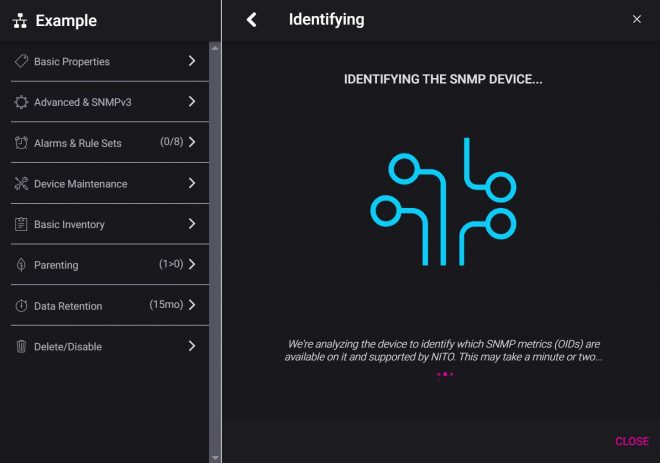To add a “peer” device, such as SNMP, see ‘Adding Devices for Monitoring’.
Peer Devices
Peers are any devices for which an agent performs monitoring for something within your network, other than the agent’s host machine (in some case, this may include extended metrics from the agent’s host machine). Most peer checks require at minimum that you specify an address/URL to be monitored. For example, you must specify the exact URL to be monitored in order to activate an HTTP(S) check, or an address and community string for SNMP devices.
Some types of checks are available only as peer devices, such as SNMP. Otherwise, it’s recommended to use an agentless/external check where an equivalent exists, as they typically contain more options, unless you have a specific requirement for monitoring from within your own network.
SNMP Identification
SNMP devices require identification before they can report regular run time data and generated alerts. During the process of SNMP identification NiTO is analyzing the available OID/MIBs on the device and memorizing those which it supports. Once identification is complete NiTO will query only the supported OIDs that it recognized during the initial analysis. An SNMP device will appear in the dashboard with ‘Undetermined’ status until it has been fully identified and has reported some data during regular run time. The identification process may take a few minutes, after which it may change to a failed state if it could not be identified.
You’ll be prompted with various troubleshooting options for an SNMP device that has failed identification (also see Troubleshooting SNMP). You can re-identify an SNMP device at any time, and change protocol options, which may be necessary any time the address or permissions change for the SNMP device itself.
